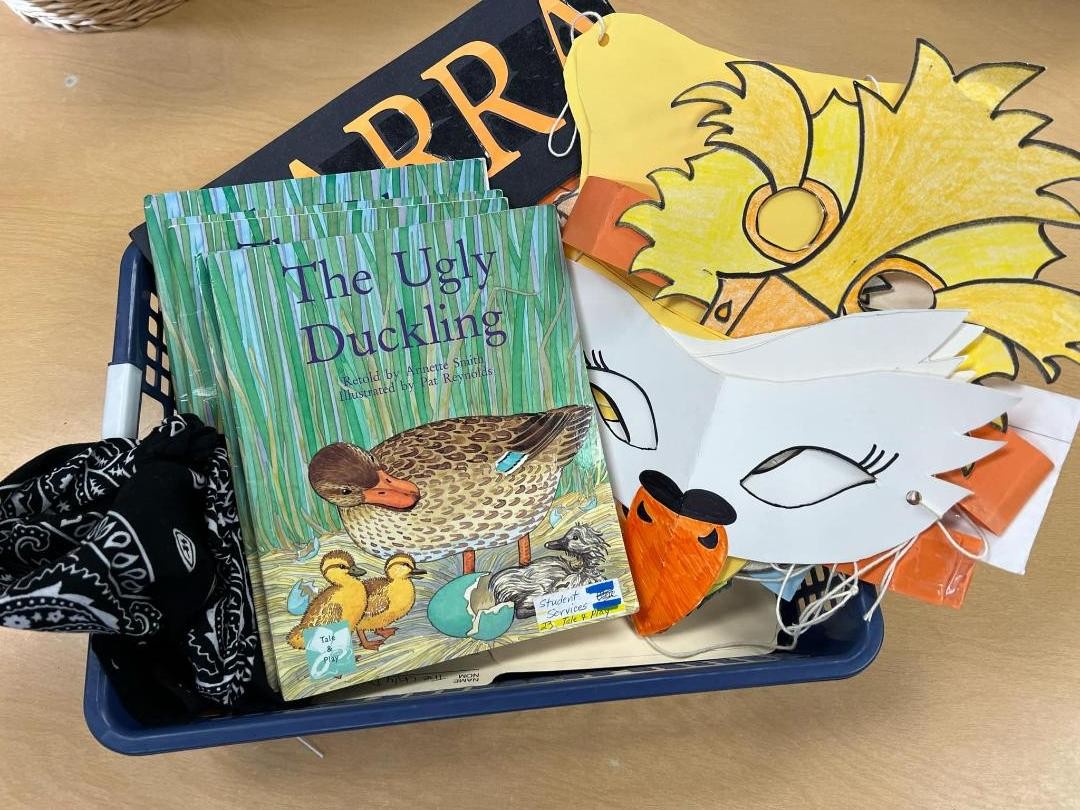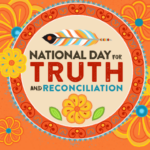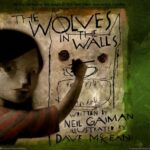What?
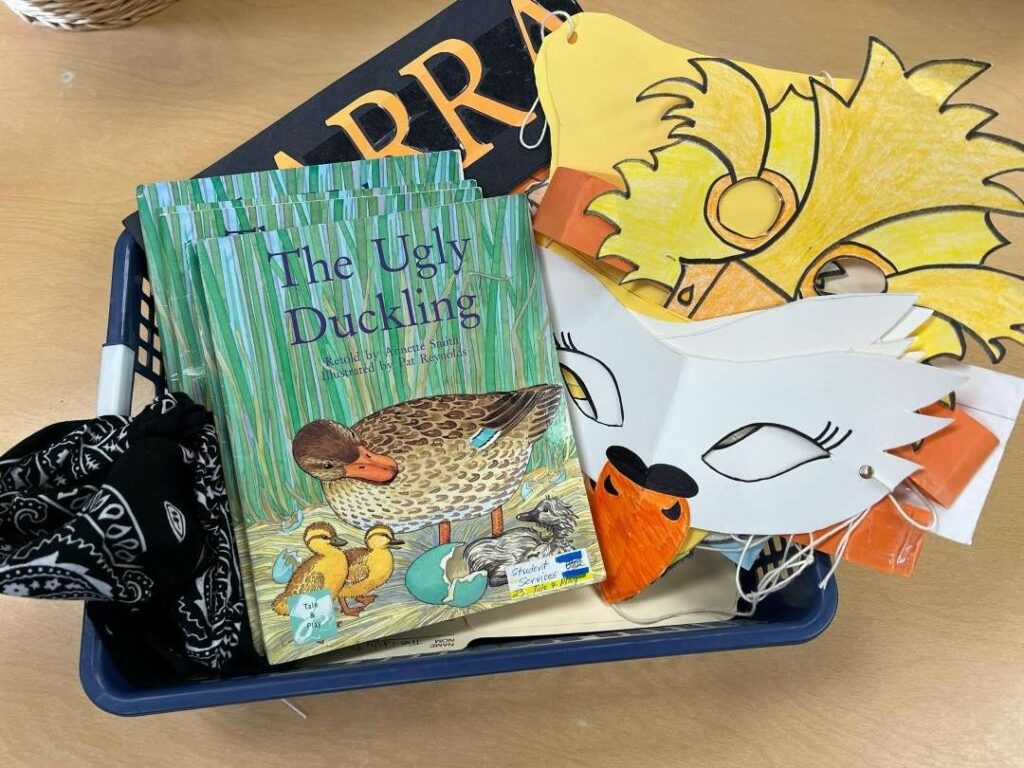
For the last two in-situs at Gordon Terrace Elementary School we had the opportunity to lead small groups of grade three students in a reader’s theatre activity. In chapter 3 of Sometimes Reading is Hard, Robin Bright shares several ways of increasing fluency for emerging readers. One of these strategies is to stage a reader’s theatre. “Readers theatre is a motivational strategy drawn from the dramatic arts, whereby students read scripts aloud to improve their reading fluency… it combines practice and performance” (Bright, 81). Students were assigned parts and practiced reading their scripts several times before reading their story in front of an audience. Students were encouraged to read with expression and were also given simple costumes to enhance the storytelling experience.
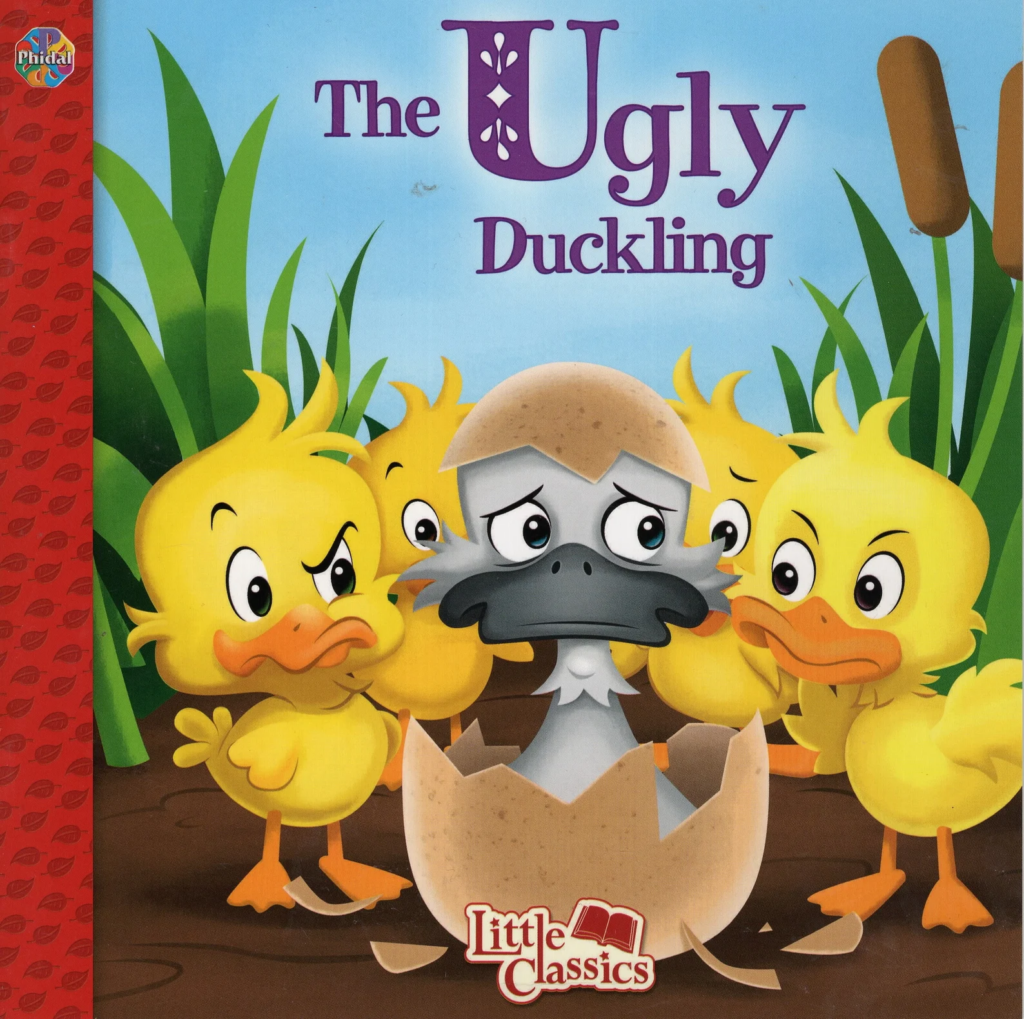
Our group shared Hans Christian Anderson’s classis tale of the Ugly Duckling. We had four students in our group, but many more roles to fill so they took on multiple roles, and we got to participate too, which was really fun. Right from the start as the students chose their roles and began practicing, it was clear that they had done this type of activity before. During the performance they read with expression and changed the tone of their voices to match the character they were playing. Our narrator had a lot of lines and was easily distracted, but his reading was fluent and his volume high so he just needed someone to sit by him to help stay focused.
So What?
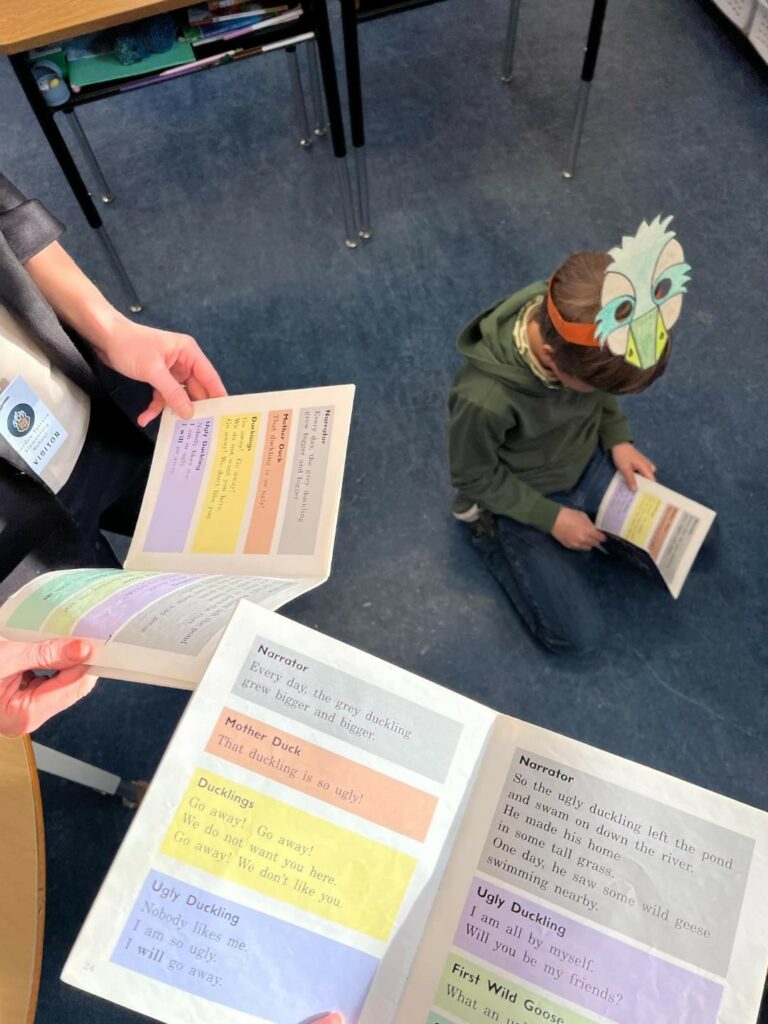
One of the big ideas for English Language Arts 3 in the BC Curriculum is “using language in creative and playful ways helps
us understand how language works”. This reader’s theatre activity achieved several of the outcomes listed in the strategies and processes content section for oral language strategies: students are to focus on the speaker, ask questions to clarify, listen for specifics, express opinions, speak with expression, stay on topic, take turns, and connect with an audience.
Now What?
In Sometimes Reading is Hard, Bright shares how one teacher incorporates reader’s theatre in his class on a twice weekly basis. I really like the cross curricular blend of literacy, music, and performance that he uses. Prior to any group practice, he talks to his students about the strategy of readers theatre and about its purpose:
*to increase fluency
*improve comprehension
*and involve everyone in reading in a non-threatening way
He lets the students lead in choosing what type of text they will use, gives guidelines for practicing, and cocreates a rubric. This is a checklist he gives: (text found on page 81, layout adapted by Somer Wolfs)
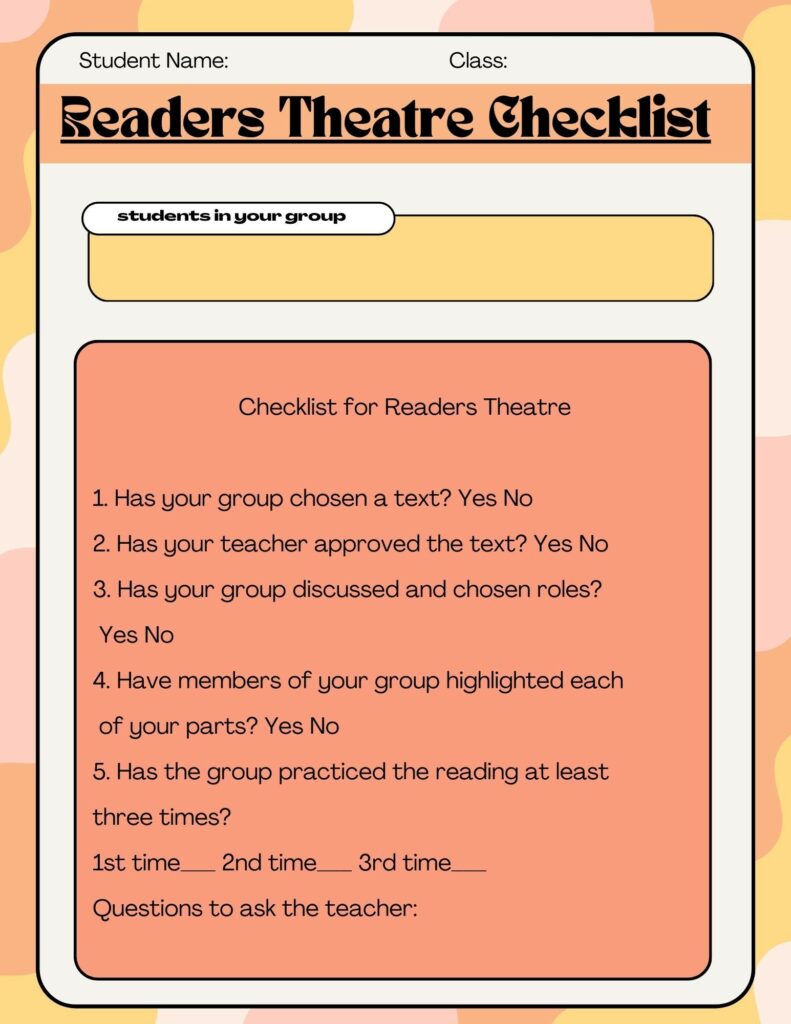
Rubric for Readers Theatre Performances:
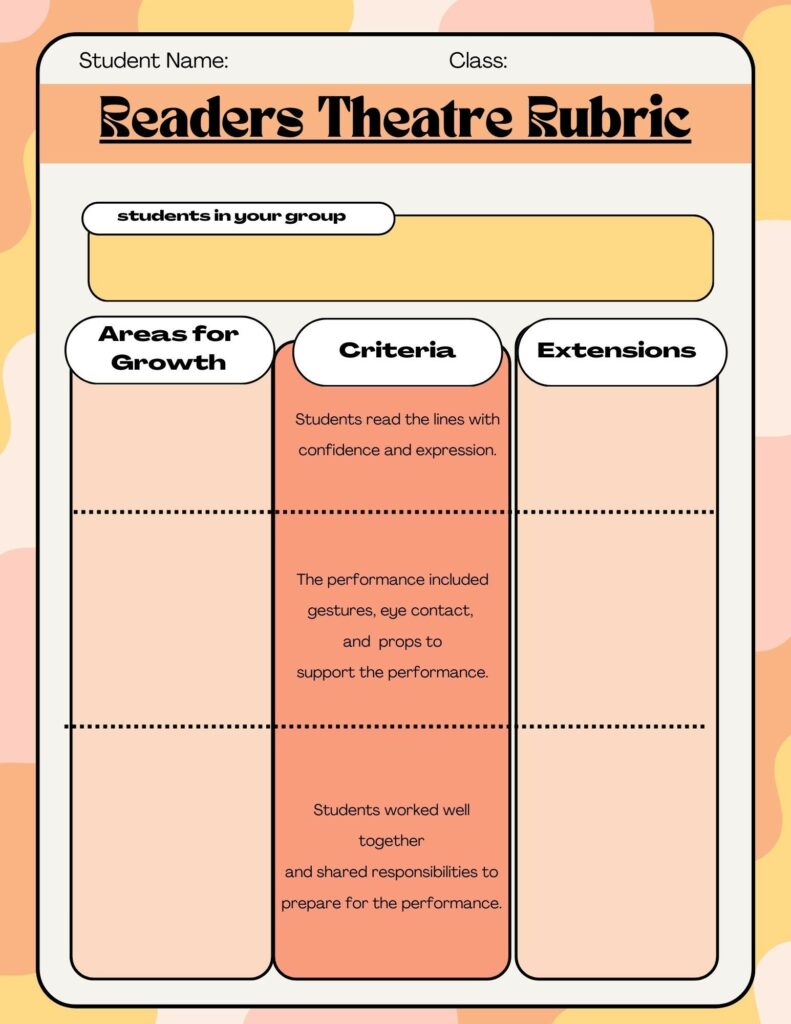
In my future classrooms I am definitely going to be using this strategy to increase fluency, comprehension, and oral speaking skills in front of an audience. Not only are students engaging in literacy skills, but they are taking risks by performing in front of an audience which takes courage. They are also learning what it means to be a good audience member as they listen politely and pay attention to the performance. I am grateful for this learning opportunity and look forward to utilizing it in my future practice!
